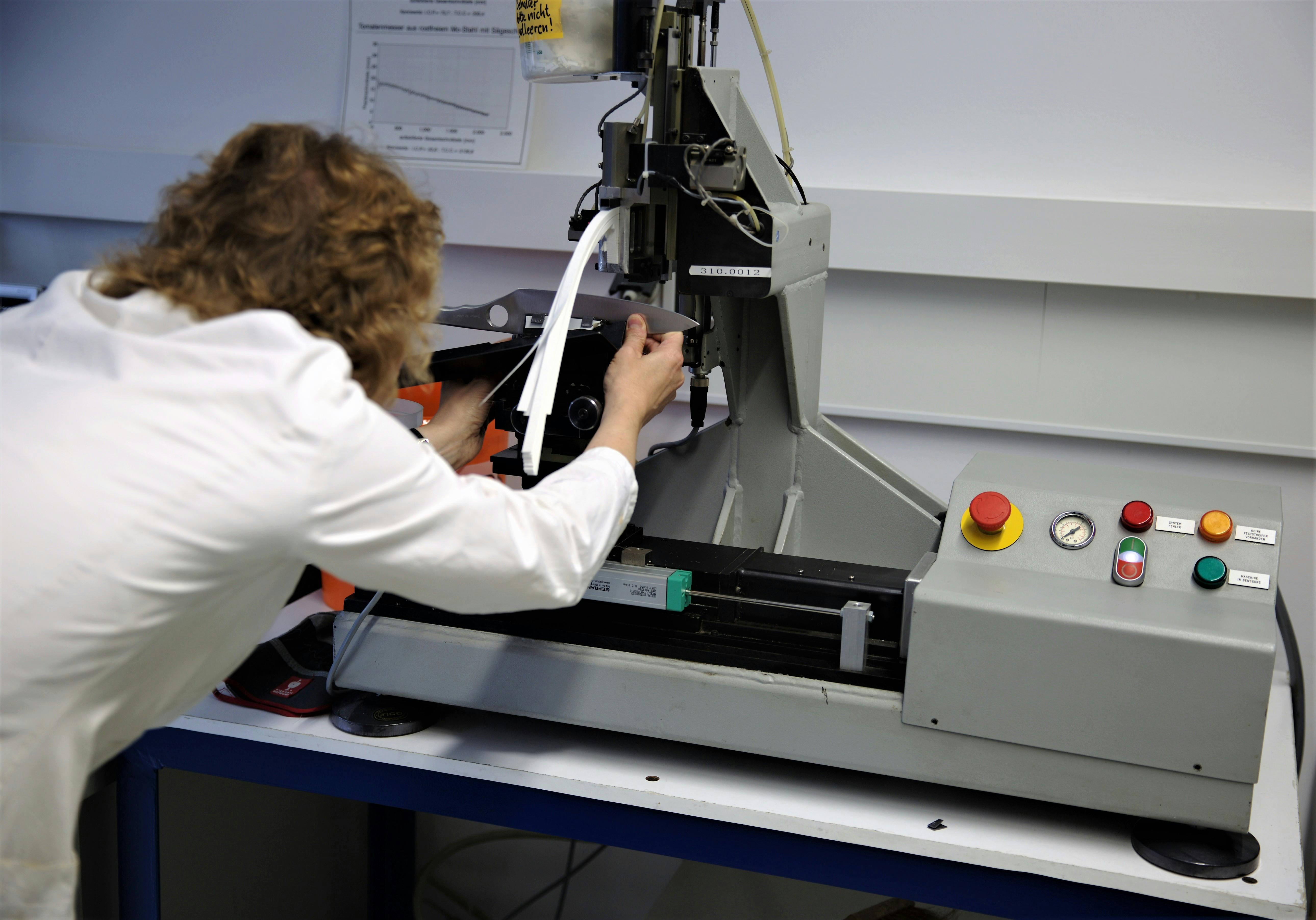
Embracing the Power of Testing: Unveiling the Benefits and Pros/Cons
Failure is often regarded as negative, a sign of weakness or incompetence. Yet, when it comes to testing and the pursuit of success, failure becomes an essential component. In fact, testing can be seen as an act of embracing failure in order to ultimately achieve triumph.
Testing allows us to identify weaknesses, uncover flaws, and expose imperfections within a product, strategy, or idea. It involves creating scenarios intentionally designed to challenge and push boundaries. By doing so, we initiate a process of trial and error that serves as a foundation for improvement.
When an idea or product undergoes rigorous testing, failure is inevitably part of the equation. Mistakes are made, assumptions are proven wrong, and flaws are revealed. However, rather than be discouraged by these failures, they should be viewed as invaluable learning opportunities.
Testing allows us to analyze failures objectively, extracting important insights in order to iterate and innovate. Each failure provides us with crucial information and feedback needed to refine and enhance our efforts. Without testing, we remain unaware of potential problems lurking beneath the surface.
Moreover, embracing failure through testing fosters a mindset that appreciates perseverance and resilience. Facing failures head-on nurtures a culture of continuous improvement. It inspires individuals and teams to constantly push their limits, knowing that each failure brings them one step closer to unprecedented success.
Testing also helps mitigate risk by proactively identifying flaws early on. By identifying weaknesses through effective testing methods such as user acceptance testing or stress testing, organizations can take necessary actions before releasing a product or implementing a strategy. This helps reduce costly mistakes down the line and keeps end-users protected from encountering avoidable issues.
Ultimately, test-driven failure is a catalyst for success. It eliminates complacency and encourages innovation. By embracing failure through testing, individuals and organizations open themselves up to transformational growth. They create an environment where calculated risks are taken, leading to breakthroughs and achievements that otherwise would not have been possible.
In conclusion, when it comes to testing and the journey towards success, embracing failure should be welcomed rather than feared. Testing allows us to iterate, innovate, and constantly improve. By accepting that failure is an inherent part of this process, we pave the way for sustainable success and continuous advancement.
 Automated vs. Manual Testing: Breaking Down the Pros and Constesting is a critical process in software development. When it comes to testing, there are two main approaches to consider: automated testing and manual testing. Both methods have their own set of advantages and disadvantages, so let's dive into the pros and cons of each.
Automated vs. Manual Testing: Breaking Down the Pros and Constesting is a critical process in software development. When it comes to testing, there are two main approaches to consider: automated testing and manual testing. Both methods have their own set of advantages and disadvantages, so let's dive into the pros and cons of each.Automated Testing:
Pros:
- Repetitive tasks can be performed quickly and accurately with automation, saving time and effort.
- Automated tests can run on multiple platforms and operating systems simultaneously, increasing test coverage.
- It allows for faster feedback on the quality of the software, making it easier to find and fix issues early in the development cycle.
- Automated tests can be easily scheduled to run during off-peak hours, optimizing team productivity.
- Test scripts can be reused across different iterations or versions of the software, ensuring consistency in testing.
Cons:
- Initial setup requires time and resources to create effective test automation frameworks.
- Some tests, particularly those involving UI or usability, are more challenging to automate accurately.
- Maintenance becomes an ongoing task as test cases need to be updated alongside changes in the system under test.
- Automated tests may not uncover certain defects that can only be identified through human intuition or exploration.
- There is a cost associated with acquiring and maintaining automation tools and infrastructure.
Manual Testing:
Pros:
- Complex scenarios and user interactions can be better tested manually as human judgment plays a crucial role.
- Manual testing allows for ad-hoc testing and exploration of the system, detecting unexpected issues.
- Non-functional testing aspects such as usability and aesthetics are better evaluated through manual means.
- Testers have the flexibility to adjust their approach based on real-time feedback during the testing process.
- It is less resource-intensive initially compared to automated testing.
Cons:
- Manual testing is time-consuming, especially when repeating tests for multiple platforms or configurations.
- Human errors could occur during repetitive tasks, leading to inconsistent or inaccurate results.
- Limited scalability due to relying on human resources and availability.
- Difficulties arise when it comes to testing complex applications that require extensive data coverage or stress testing.
- As manual tests are largely based on the tester's knowledge and experience, it introduces an element of subjectivity.
In summary, both automated and manual testing have their merits and drawbacks. While automation can streamline repetitive and time-consuming tasks, manual testing is invaluable when it comes to complex scenarios and real-user interaction. To maximize the efficiency and effectiveness of software testing, it's often recommended to leverage a combination of both approaches – using automation where viable, and manual testing for scenarios that require human observation and intuition.
 The Psychological Benefits of Testing in Learning and DevelopmentThe Psychological Benefits of testing in Learning and Development
The Psychological Benefits of Testing in Learning and DevelopmentThe Psychological Benefits of testing in Learning and DevelopmentTesting is commonly seen as a way to assess knowledge and gauge one's level of understanding. However, tests also come with numerous psychological benefits that contribute to effective learning and development. Here are some key points to consider concerning the advantages of testing:
1. Retrieval practice: Testing provides an opportunity for learners to actively retrieve information from their memory banks. By recalling and answering questions, individuals reinforce their understanding as the brain consolidates information better through retrieval processes. This act of recalling strengthens memory retention.
2. Enhanced long-term memory: Regular testing aids in strengthening long-term memory by activating different cognitive processes. When we retrieve information repeatedly over time, it becomes more resilient in our minds. With each test, the knowledge becomes consolidated, making it easier to retrieve later on.
3. Metacognitive awareness: Taking tests helps develop metacognitive skills – the ability to think about and regulate our own cognitive processes effectively. Testing highlights gaps in comprehension, allowing learners to identify their weaknesses and areas they need to focus on. Consequently, this awareness improves study strategies and enhances self-regulated learning.
4. Confidence building: Through successful completion of tests or improvement over time, learners gain confidence in their abilities and knowledge. Positive outcomes on assessments cultivate a positive mindset towards learning, boosting motivation levels and encouraging individuals to persist in acquiring knowledge.
5. Reducing forgetting: Illusions of fluency tend to occur when one only focuses on absorbing new material without regular retrieval practice. Over time, such fluency fades away if not reinforced by active testing. Implementing consistent testing helps minimize the effects of forgetting, resulting in more durable knowledge retention.
6. Application of knowledge: Tests often require individuals to apply learned information into practical scenarios or problem-solving tasks. Such application enhances comprehension by demonstrating how knowledge can be utilized in real-life situations, fostering deeper understanding rather than surface-level memorization.
7. Stress and anxiety management: While tests may evoke stress for some individuals, they can also help manage test anxiety with regular exposure. Repeatedly facing assessment situations reduces the novelty and dread associated with tests, instilling a level of comfort and preparedness over time. Additionally, proper test preparation and supportive learning environments contribute to reducing anxiety levels.
8. Efficient retrieval strategies: Testing encourages learners to develop effective retrieval strategies, such as creating mnemonics or connecting new material to existing knowledge. These techniques result in more accessible retrieval paths for future use, aiding in faster recall during actual tests or real-life situations requiring application of knowledge.
9. Improved attention and focus: Tests demand concentrated attention during exam preparation, leading to increased focus on the topic at hand. Active engagement through testing stimulates cognitive processes and inhibits distractions, promoting a deeper grasp of the subject matter being tested.
10. Motivation for further learning: Completion of tests with positive outcomes often acts as a motivation to delve further into a particular subject. Success can inspire individuals to pursue additional knowledge within a topic area or in related fields.
In conclusion, testing plays a crucial role in fostering meaningful learning and development beyond assessment purposes alone. From enhancing memory retention and metacognitive skills to reducing forgetting and managing stress, regular testing promotes effective learning strategies invaluable for personal growth and academic accomplishments.
 Why Continuous Testing Is Key to a Successful IT ProjectContinuous testing is a crucial aspect of any successful IT project. It involves incorporating testing activities throughout the entire software development lifecycle rather than leaving it until the end. By embracing continuous testing, organizations can ensure that defects are detected and fixed promptly, ultimately resulting in improved quality and faster delivery of software.
Why Continuous Testing Is Key to a Successful IT ProjectContinuous testing is a crucial aspect of any successful IT project. It involves incorporating testing activities throughout the entire software development lifecycle rather than leaving it until the end. By embracing continuous testing, organizations can ensure that defects are detected and fixed promptly, ultimately resulting in improved quality and faster delivery of software.The traditional approach to testing involves separate, dedicated testing phases towards the end of the project timeline. However, this can lead to several challenges such as increased costs, delays, and limited time for adequate testing. Continuous testing addresses these issues by emphasizing early identification and mitigation of defects, reducing the overall risk associated with the project.
One key benefit of continuous testing is its ability to provide prompt feedback on the quality of the developed software. Test cases are executed as parts of automated build processes or in response to code changes, giving developers early visibility into any introduced defects. This leads to faster bug detection and fixes, preventing issues from piling up and becoming more complex to resolve later.
Additionally, continuous testing promotes collaboration between development and testing teams. Embedding testing from the very beginning encourages frequent communication and knowledge sharing. This partnership helps align everyone's objectives towards delivering high-quality software, reducing rework and improving efficiency.
Continuous testing improves test coverage by allowing repetitive execution of test cases across different development cycles. Automated test suites are created to validate the functionality and behaviors of the software in an automated manner. As a result, organizations can quickly identify if any changes made in one part of the system impact other areas that were not directly modified.
Moreover, continuous testing supports effective risk management. By keeping a close eye on potential defects at each stage of development, organizations can proactively mitigate risks associated with functionality, performance, security, or compatibility issues. This proactive approach not only ensures higher application quality but also gives stakeholders and end-users more confidence in the software.
Frequent testing throughout the project also provides management with real-time insights into its progress. Regular reporting on the status of various test activities helps teams make informed decisions on resource allocation, bug prioritization, and allocation of any delayed task dependencies. This increased transparency enables better project planning and timely adjustments to ensure successful delivery.
In conclusion, continuous testing plays a pivotal role in successful IT projects. By integrating testing activities throughout the software development lifecycle, organizations can improve software quality, reduce costs, and deliver high-value products faster. The early identification and resolution of defects, collaboration between teams, improved test coverage, proactive risk management, and enhanced project visibility all contribute to an efficient and successful IT project.
 The True Cost of Skipping the Testing Phase in Product DevelopmentSkipping the testing phase in product development can have significant consequences that are often overlooked. Testing plays a vital role in ensuring that products meet quality standards and perform as expected. Neglecting this phase can jeopardize not only the product's reliability and stability but also its overall success in the market. Here are some critical aspects to consider when it comes to understanding the true cost of skipping testing:
The True Cost of Skipping the Testing Phase in Product DevelopmentSkipping the testing phase in product development can have significant consequences that are often overlooked. Testing plays a vital role in ensuring that products meet quality standards and perform as expected. Neglecting this phase can jeopardize not only the product's reliability and stability but also its overall success in the market. Here are some critical aspects to consider when it comes to understanding the true cost of skipping testing:Investing time and resources into testing improves the likelihood of identifying defects, bugs, or vulnerabilities during the development stage. By uncovering these issues early on, companies can rectify them efficiently and reduce long-term expenses associated with addressing them post-launch.
Without sufficient testing, product reliability diminishes. Quality assurance activities help identify and mitigate potential risks, helping to ensure a robust user experience. Skipping this critical phase may result in unstable or unpredictable performance, leading to unexpected downtime, lost customers, damage to brand reputation, and possibly even legal liabilities.
Conducting thorough tests allows for enhancements based on user feedback and identified pain-points. Skipping this process means missing out on valuable insights that could guide future iterations or updates. Without an understanding of how users interact with the product in realistic scenarios, it becomes difficult to deliver a market-ready solution that aligns with customer needs and expectations.
Skimping on testing jeopardizes security. Malicious actors are always seeking vulnerabilities to exploit, making secure software development an urgent requirement. Testing uncovers potential weaknesses or flaws that hackers may exploit or infiltrate, which can lead to data violations, breaches of privacy, financial losses, lawsuits, or regulatory penalties.
The true costs of bypassing testing are not solely associated with the initial development stages. Following a lack of proper quality assurance practices, customers might encounter bugs or flaws in established products after launch. Addressing these issues post-release imposes additional expenses on companies such as emergency bug fixes, patching software, providing technical support to frustrated users, or even initiating costly product recalls.
Not conducting tests limits confidence in a product's functionality, inhibiting stakeholders' ability to make informed decisions. This lack of certainty also impacts users, as they experience frustration due to unreliable features and unwanted interruptions, resulting in potential disengagement and negative brand perception.
Ultimately, skipping the testing phase undermines the potential success and profitability of a product. It increases the likelihood of unfavorable reviews, poor customer satisfaction, limited adoption or sales, and even potentially derailing a business entirely. By investing in proper testing protocols, organizations have an opportunity to save costs long-term and position their products favorably in competitive markets.
In conclusion, the true cost of skipping testing in product development spans reliability issues, compromised security, foregone enhancements, reduced confidence, post-launch expenses, and detrimental effects on overall business success. It is essential for companies to recognize the importance of quality assurance in every stage of development to deliver superior products that align with user expectations.
 Performance Testing Simplified: A Guide to Understanding Its ImportancePerformance testing Simplified: A Guide to Understanding Its Importance
Performance Testing Simplified: A Guide to Understanding Its ImportancePerformance testing Simplified: A Guide to Understanding Its ImportancePerformance testing plays a crucial role in assessing the efficiency and reliability of software, websites, or applications. It involves evaluating how well these digital tools perform under specific circumstances to ensure they can handle a substantial load and provide a seamless user experience. In this blog post, we will delve into the intricacies of performance testing, portraying its significance to developers, businesses, and end-users.
1. Introduction to Performance Testing:
Performance testing includes various techniques designed to analyze the speed, responsiveness, scalability, stability, and resource utilization of software systems. By conducting tests under simulated real-world conditions, such as heavy user traffic or peak load periods, developers gain critical insights into the system's capabilities and identify potential bottlenecks.
2. Ensuring Optimal User Experience:
Performance testing is vital for providing users with an optimal experience when interacting with an application or website. By simulating various scenarios and significant loads, testers can measure how quickly web pages load, actions are executed, transactions are completed, or results are retrieved from databases. This helps detect any performance issues that may result in slow response times or crashes.
3. Determining Scalability and Capacity Planning:
One of the main objectives of performance testing is to assess the system's ability to handle different loads. Testers simulate both normal and extreme conditions to verify its scalability - whether it can accommodate increasing user bases without performance degradation. Understanding capacity limits helps organizations plan future expansions, allocate resources effectively, and prevent unexpected crashes due to sudden traffic surges.
4. Detecting Performance Bottlenecks:
Performance testing identifies and resolves bottlenecks that hinder the system's functionality under demanding circumstances. These bottlenecks could stem from issues like inefficient algorithms or poorly optimized code. By pinpointing the sources of slowdowns or failures, developers can address them before they impact end-users or become costly problems down the line.
5. Enhancing Application Performance:
Identifying and rectifying performance issues through comprehensive testing greatly contributes to the overall enhancement of software applications. By conducting load testing, stress testing, or endurance testing, developers can optimize code, fine-tune database operations, improve network configurations, or allocate resources more effectively. Ultimately, this results in faster response times, improved stability, and an exceptional user experience.
6. Early Issue Identification:
Performance testing at different stages of software development helps detect and resolve issues earlier in the process. By incorporating performance testing into agile methodologies and continuous integration pipelines, companies can identify bottlenecks and weaknesses before they permeate the entire system. This aids in cost reduction as remedial action can be taken promptly without impacting critical deadlines or compromising development cycles.
7. Realistic User Scenarios:
A significant aspect of performance testing involves designing realistic user scenarios that reflect actual end-user behavior, considering various factors like typical usage patterns, geographical distribution, or specific peak periods. By accurately simulating these scenarios within controlled test environments, testers can assess how the system responds and analyze its stability under realistic conditions.
8. Types of Performance Testing:
Beyond load testing, other forms of performance testing include stress testing (to determine system resilience), spike testing (to evaluate its response to sudden surges), scalability testing (to measure growth capacity), and endurance testing (to validate long-term sustainability). Each type serves a unique purpose towards achieving optimal application performance.
9. Test Automation and Tools:
Performing manual tests for comprehensive performance evaluation can be daunting and time-consuming. That's why automation tools like JMeter, LoadRunner, or Gatling are widely used in performance testing. These tools help simulate real-life scenarios, generate detailed reports with metrics (such as response time or throughput), monitor server resources, and conduct in-depth analysis to identify performance bottlenecks expediently.
In conclusion, understanding the importance of performance testing is pivotal for developers and organizations aiming to provide excellent user experiences. By assessing the system's scalability, identifying bottlenecks, and optimizing performance, software applications and websites can achieve reliable performance even under challenging circumstances. Therefore, investing effort into comprehensive performance testing becomes imperative to deliver efficient digital solutions in today's technology-driven world.
 Security Testing: Unveiling Its Crucial Role in Safeguarding Your Digital AssetsSecurity testing plays a pivotal role in ensuring the protection and integrity of digital assets in today's interconnected world. With the prevalence of cyber threats and attacks, it has become increasingly important for organizations to implement robust security measures that can effectively mitigate risks associated with storing, transmitting, and accessing confidential data.
Security Testing: Unveiling Its Crucial Role in Safeguarding Your Digital AssetsSecurity testing plays a pivotal role in ensuring the protection and integrity of digital assets in today's interconnected world. With the prevalence of cyber threats and attacks, it has become increasingly important for organizations to implement robust security measures that can effectively mitigate risks associated with storing, transmitting, and accessing confidential data.At its core, security testing is a systematic examination of applications, networks, and systems to identify vulnerabilities and weaknesses that could potentially be exploited by unauthorized individuals. By proactively discovering and addressing these vulnerabilities before malicious actors can leverage them, organizations can significantly reduce the risk of potential breaches or unauthorized access.
One aspect of security testing focuses on identifying and addressing flaws in software applications or systems that are susceptible to exploitation. This involves a comprehensive analysis of coding practices, software configurations, access controls, and encryption mechanisms to ensure they adhere to prevailing security standards. Through various techniques like penetration testing (also known as ethical hacking), code analysis, or vulnerability scanning, testers simulate attack scenarios to assess the resilience and effectiveness of an organization's security measures.
Another key element of security testing entails evaluating network infrastructure to prevent unauthorized access or data leakage. This involves conducting network security assessments and audits to identify configurations that do not meet best practices. Through activities such as firewall analysis, intrusion detection system (IDS) testing, or vulnerability scanning, security testers aim to identify weaknesses within the network's perimeter and propose appropriate remediation measures.
Web application security testing is also a critical component of overall security assessment. It involves examining the vulnerabilities present within web applications like cross-site scripting (XSS), SQL injection, or insecure direct object references. By employing specialized tools or performing manual tests, experts can assess the reliability of input validation mechanisms, session management processes, or authentication protocols. Additionally, mobile application security testing serves a similar purpose when addressing unique threats specific to mobile platforms.
Moreover, security testing delves into different types of authentication mechanisms such as biometric authentication or multi-factor authentication (MFA). By testing these systems, their effectiveness and vulnerability to forgery or unauthorized access can be determined. Additionally, security testers examine the implementation of access controls and permissions within an organization's digital environment to ensure only authorized users have the required privileges.
Lastly, security testing also encompasses comprehensive security audits and reviews that assess overall security posture. These audits may involve compliance checks against industry-specific regulations such as Payment Card Industry Data Security Standard (PCI DSS), Health Insurance Portability and Accountability Act (HIPAA), or General Data Protection Regulation (GDPR), to ensure organizations adhere to relevant data protection laws. They may also involve reviewing security policies and procedures, conducting user awareness training, or developing incident response plans to fortify overall defenses.
In conclusion, as organizations seek to protect their digital assets from increasingly sophisticated cyber threats, security testing emerges as an essential practice. By performing rigorous assessments of software applications, network infrastructure, web or mobile applications, authentication mechanisms, and compliance with data protection standards, organizations can mitigate risks and enhance the security posture more effectively. The continuous pursuit of thorough security testing is crucial for safeguarding valuable digital assets in an ever-evolving threat landscape.
 Usability Testing: Ensuring Products Are User-Friendly and IntuitiveUsability testing is a vital component of product development, focused on ensuring that the end-users find a product or website user-friendly and intuitive. By evaluating a product's usability, companies can identify areas of concern and make necessary improvements to enhance user satisfaction.
Usability Testing: Ensuring Products Are User-Friendly and IntuitiveUsability testing is a vital component of product development, focused on ensuring that the end-users find a product or website user-friendly and intuitive. By evaluating a product's usability, companies can identify areas of concern and make necessary improvements to enhance user satisfaction.Usability testing involves observing participants as they interact with a product, often through tasks or scenarios designed to mimic real-life usage. By carefully observing users' behavior, reactions, and feedback, usability testers gather valuable insights to measure the ease of use and overall user experience. This user-centered approach helps identify any pain points, confusion, or inefficiencies within the product's design.
The primary goal of usability testing is to assess the intuitiveness and effectiveness of an interface's navigation and design. Usability testers focus on specific aspects such as ease of learning, efficiency, memorability, error prevention, and overall satisfaction as users complete various tasks.
During a usability test session, participants are given instructions and asked to perform specific actions or complete predefined scenarios. The test moderator closely observes how effectively and efficiently users navigate through the product while noting any areas where they encounter difficulty or confusion.
To conduct meaningful usability tests, it is essential to have a diverse pool of representative users who reflect the target audience's demographics, preferences, and abilities. This practice contributes to more reliable results by capturing perspectives from different backgrounds.
Usability testing typically involves both qualitative and quantitative data collection methods. Qualitative data is gathered through direct observation, note-taking, video recording of user sessions, or interview-style conversations after completing each task. These qualitative insights help understand user motivations, feelings, preferences, and frustrations.
Quantitative data can also be utilized by measuring performance metrics like completion rates, time taken to complete tasks accurately and efficiently, and the number of errors encountered along the way. The combination of qualitative and quantitative data allows for comprehensive analysis and evidence-based decision making.
Testers collate their findings from usability tests into detailed reports, identifying specific usability issues and providing recommendations for improvement. These recommendations might include revisions to the product's layout, labeling, instructions, or interactive elements intended to enhance clarity and overall user experience.
Usability testing is an iterative process that should occur throughout the product development lifecycle. Conducting tests at various stages ensures early detection of usability problems and allows for more targeted refinements and optimizations as feedback is incorporated into subsequent design iterations.
By embracing usability testing, companies can improve products' quality while saving time and resources by addressing potential user concerns before launching. Ensuring that products are genuinely user-friendly, intuitive, and enjoyable to use ultimately contributes to high customer satisfaction, loyalty, and the overall success of any product or service.
 The Ethical Dimensions of Testing in Technology and MedicineThe ethical dimensions of testing in technology and medicine play a crucial role in ensuring the well-being of individuals, while addressing potential risks and advancing innovation. Testing in both fields involves a range of issues that go beyond technicalities, as it directly concerns human lives and societal impact. These dimensions revolve around topics such as informed consent, privacy, fairness, bias, trustworthiness, and the permissibility of using animals for experiments.
The Ethical Dimensions of Testing in Technology and MedicineThe ethical dimensions of testing in technology and medicine play a crucial role in ensuring the well-being of individuals, while addressing potential risks and advancing innovation. Testing in both fields involves a range of issues that go beyond technicalities, as it directly concerns human lives and societal impact. These dimensions revolve around topics such as informed consent, privacy, fairness, bias, trustworthiness, and the permissibility of using animals for experiments.To begin with, informed consent is a fundamental concept that emphasizes the importance of obtaining individuals' explicit agreement before involving them in technological or medical tests. It requires clear communication about the purpose, potential risks, benefits, and alternatives associated with a particular test. The principle of informed consent ensures that participants have autonomy over their involvement and safeguards against coercion or manipulation.
Privacy also plays a significant role when considering the ethical dimensions of testing. Protecting individuals' sensitive information gathered during tests is crucial to maintain their autonomy and dignity. In technologically-driven tests, especially those involving personal data collection or surveillance, it becomes imperative to establish protocols that safeguard privacy rights.
Another dimension to consider is fairness in testing practices. Technologies and medical procedures should be evaluated without any unjust bias or discrimination. Fairness encompasses equal access to testing opportunities for all individuals regardless of demographic or socioeconomic traits. Ethical implications can arise if certain groups are systematically left out from testing procedures or denied the benefits derived from advanced technology.
Bias is an essential aspect within the ethical dimensions of testing. This refers to tendencies that can undermine the reliability and accuracy of results by introducing arbitrary preferences or prejudices during the process. Tackling bias requires implementing rigorous experimental designs, diverse sampling, and minimizing human interference that could affect judgments unjustly.
Trustworthiness is crucial when conducting tests in technology and medicine. Individuals must have confidence that accurate findings will be reported transparently, without any attempts to conceal potentially negative outcomes or harm caused by the testings. Building trust involves promoting accountable research practices and transparent reporting, even when results may not align with researchers' interests or expectations.
In the case of medical testing, ethical dimensions extend to debates on animal testing. While some argue that animal experimentation is integral for scientific progress and advancements in medicine, conversations about the ethical implications of using animals in tests have become increasingly critical. These discussions delve into topics such as animal welfare, whether alternative methods can be utilized, and the necessity of minimizing animal suffering during testing processes.
In conclusion, understanding and addressing the ethical dimensions of testing in technology and medicine are essential for ensuring both individual well-being and the progress of society. Incorporating principles such as informed consent, privacy safeguards, fairness, unbiased methodologies, trustworthy reporting, and considering alternatives to animal testing will contribute to a more morally sound landscape for scientific and medical advancements.
 Beta Testing Best Practices: Engaging Users for Quality FeedbackBeta testing refers to the process of allowing users to try out a software, product, or service in its final development stage to collect valuable feedback and identify any potential issues or bugs before its official release. To ensure effective beta testing and obtain quality feedback from users, several best practices come into play.
Beta Testing Best Practices: Engaging Users for Quality FeedbackBeta testing refers to the process of allowing users to try out a software, product, or service in its final development stage to collect valuable feedback and identify any potential issues or bugs before its official release. To ensure effective beta testing and obtain quality feedback from users, several best practices come into play.Firstly, it is crucial to engage users actively during the beta testing phase. By offering clear instructions, setting expectations, and providing detailed guidelines, testers can better understand what needs to be done and provide focused feedback. This engagement can take the form of email communication, online forums, video calls, or even in-person meetings. The goal is to establish a channel for constant interaction between the testers and developers.
In addition to clear instructions, it is essential to clearly outline the scope of the beta test. Defining what elements should be tested specifically and what areas are out of scope helps testers concentrate their efforts. This prevents precious time from being wasted on irrelevant aspects and instead focuses on capturing important issues.
Another critical practice is choosing the right set of beta testers. Testers with diverse backgrounds, skill sets, and varying levels of technical expertise allow for a broader range of perspectives and help uncover different types of issues. Additionally, a mix of both expert users and newcomers can provide insights from various experience levels, catering to different user segments that will ultimately use the product or service.
Providing regular updates and responding promptly to questions or issues raised by testers is crucial as it shows respect for their time and effort. Enhancing collaboration involves creating discussion groups, hosting webinars or Q&A sessions where developers can interact directly with testers. Through these channels, developers gain a deeper understanding of the users' expectations and challenges they encounter during testing.
It is also important to encourage open-ended feedback instead of solely relying on predefined surveys or questionnaires. Open feedback allows testers to express their thoughts freely without constraints, presenting innovative ideas or highlighting concerns that may otherwise go unnoticed. This also implies offering users multiple platforms or mechanisms through which they can submit their feedback, such as online forms, email, or even phone calls.
Documentation is another vital aspect of beta testing best practices. Maintaining up-to-date documentation of known issues, frequently asked questions, and troubleshooting guides not only assists testers in navigating potential challenges but also helps developers organize and address identified problems efficiently.
Timely communication is essential throughout the beta testing phase. Managing tester expectations by providing regular progress updates instills confidence in the development process. Openly sharing findings, both positive and negative, reinforces transparency and fosters trust between the testers and developers.
Lastly, it is crucial to express gratitude towards the beta testers for their invaluable contribution. Acknowledging their efforts with small gestures like including them in product credits, offering discounts or free access to the final release version strengthens the bond between users and developers, increasing their willingness to engage again in the future.
In summary, successful beta testing programs involve engaging users effectively while clearly defining the scope of testing. A diverse range of testers should be selected to provide comprehensive feedback, and regular communication and collaboration are key throughout the process. Documentation helps address issues efficiently, while open-ended feedback allows for innovative ideas. Ultimately, recognizing and appreciating beta testers' efforts cultivates a healthy working relationship that ensures quality feedback leading to an improved product or service upon its official release.
 Maximizing Efficiency: How Agile Methodology Enhances Testing ProcessesMaximizing Efficiency: How Agile Methodology Enhances testing Processes
Maximizing Efficiency: How Agile Methodology Enhances Testing ProcessesMaximizing Efficiency: How Agile Methodology Enhances testing ProcessesAgile methodology has gained significant momentum in software development, revolutionizing testing processes to optimize efficiency and productivity. This approach concentrates on building software incrementally through iterative development, providing unique benefits to test teams. In this blog, we explore how agile methodology enhances testing processes and maximizes efficiency.
Quick Feedback Loop: Agile's iterative nature enables frequent communication between developers and testers. With shorter development cycles called sprints, testers receive regular feedback on their work. By having early access to product increments, testers can quickly identify and address any issues, eliminating potential bottlenecks down the line.
Transparent Collaboration: Agile methodology promotes a collaborative work environment, where testers actively participate in discussions throughout the entire process. With increased transparency, they gain insights into the entire project scope, ensuring clear understanding of requirements and business goals. This collaboration cultivates a shared responsibility for quality assurance and reduces the chances of overlooking critical elements that may impact product performance.
Continuous Integration: Agile facilitates continuous integration, allowing testers to continuously merge individual code changes into a shared repository. This integration promotes ongoing testing throughout the development process. As a result, issues can be detected earlier, making it easier to promptly rectify them before they escalate into more significant problems. Constant integration and testing enable teams to maintain high-quality standards from start to finish.
Flexible Adaptability: The dynamic nature of agile allows teams to be responsive in adapting to changing requirements and priorities. Testers can rapidly modify their testing efforts as needed during each sprint, based on shifting project needs. This flexibility ensures that test efforts remain aligned with the evolving scope of project expectations, enhancing overall efficiency by preventing time wasted on conducting tests that are no longer relevant.
Continuous Improvement: Agile principles encourage retrospective meetings at the end of each sprint, promoting continuous improvement across all facets of software development, including testing processes. During these sessions, test teams reflect on their past performance, identifying potential areas for enhancement. This approach drives an iterative cycle of constantly refining test strategies, improving productivity, and maximizing efficiency over time.
Effective Communication: Agile frameworks establish clear channels and regular forums for communication among testers, developers, and other stakeholders. Agile ceremonies like daily standups, sprint planning sessions, and sprint reviews ensure everyone involved is on the same page. Exchange of ideas, clarifications, and updates foster effective collaboration while reducing misunderstandings and potential mistakes in testing efforts.
Productivity Boost: The agile mindset empowers testers to work smarter by prioritizing tasks and focusing on delivering value in every sprint. By breaking down testing activities into manageable increments, test teams can efficiently allocate their time and resources. This targeted approach improves productivity as testers concentrate on validations that bring the greatest impact, ensuring thorough testing without unnecessary overheads.
In conclusion, the introduction of agile methodology has immensely improved testing processes by providing a framework that maximizes efficiency. Agile promotes quick feedback loops, transparent collaboration, continuous integration, flexible adaptability, continuous improvement, effective communication, and a productivity boost within test teams. Embracing agile principles not only helps testers streamline their workflow but also enables them to consistently deliver high-quality software products.
 Overcoming the Challenges of Cross-platform TestingCross-platform testing can present a daunting challenge for software testers due to the ever-expanding range of devices, operating systems, and browsers in use today. Ensuring an application works seamlessly on different platforms is crucial for customer satisfaction and market success. However, various difficulties arise during the cross-platform testing process that require careful consideration and effective strategies.
Overcoming the Challenges of Cross-platform TestingCross-platform testing can present a daunting challenge for software testers due to the ever-expanding range of devices, operating systems, and browsers in use today. Ensuring an application works seamlessly on different platforms is crucial for customer satisfaction and market success. However, various difficulties arise during the cross-platform testing process that require careful consideration and effective strategies.Compatibility across diverse platforms introduces challenges such as differences in screen sizes, resolutions, hardware capabilities, and user interfaces. This implies that well-crafted applications might behave inconsistently or experience glitches on certain platforms. To tackle this, testers must be equipped with comprehensive knowledge of target platforms alongside the related peculiarities and constraints involved.
Choosing the right tools is an indispensable aspect of the cross-platform testing endeavor. Numerous specialized software frameworks enable efficient automation of test scripts that can be run across multiple platforms simultaneously. Utilizing such robust frameworks reduces time and effort invested in manually running tests on each platform individually.
Addressing inconsistencies in user experiences demands meticulous attention during cross-platform testing. Users depend on consistent interactions across various devices, often expecting seamless transitions while switching between platforms. Testers should focus on maintaining a unified experience among different versions of an application, striving for visual uniformity and ease-of-use across all supported platforms.
Effective communication between testers, developers, and designers plays a crucial role in overcoming cross-platform testing challenges. Collaborative efforts amongst team members aid in identifying platform-specific issues early on and incorporating necessary fixes and enhancements accordingly. Consistent feedback channels help continuously improve application performance across all platforms.
Time constraints often emerge as a significant hurdle while attempting comprehensive cross-platform testing. Tasks such as writing test cases, ensuring compatibility with multiple operating systems (OS), executing tests efficiently, and analyzing results consume considerable time and resources. Testers need to plan meticulously to optimize testing efforts while considering project deadlines and business requirements precisely.
Successfully managing test environments is essential when conducting cross-platform testing. Having dedicated physical or virtual devices available enables testers to validate applications on different OS versions. Ensuring proper network connectivity, battery simulation, and emulator configuration mimics real-world circumstances closely, providing accurate and meaningful test results.
Developing a well-defined test strategy specifically tailored for cross-platform testing is a solid foundation for mitigating difficulties. Testers should prioritize the most popular platforms based on user demographics and preferences to maximize testing coverage within limited timeframes. Comprehensive test coverage across essential browsers and accessibility options also contributes substantially to delivering a high-quality application experience.
Final Thoughts: Overcoming the challenges of cross-platform testing necessitates a strategic approach combined with the meticulous utilization of appropriate tools, effective communication channels, and optimized workflows. Striving for consistent application behavior while accounting for platform-specific constraints significantly enhances the chances of creating an application capable of providing a seamless experience across all supported platforms.
 Exploring the Evolution of Testing: From Quality Control to Continuous ImprovementExploring the Evolution of testing: From Quality Control to Continuous Improvement
Exploring the Evolution of Testing: From Quality Control to Continuous ImprovementExploring the Evolution of testing: From Quality Control to Continuous ImprovementIn the past few decades, software testing has witnessed a significant evolution, transitioning from isolated quality control processes to a more integrated and continuous improvement approach. This shift has been fuelled by the rapid advancements in technology, changing business needs, and the growing complexity of software systems. Today, testing plays a critical role in ensuring the delivery of high-quality software products that meet customer expectations.
Quality control, which was once the foundation of testing methodologies, focused primarily on detecting defects and ensuring that software met specified requirements before release. The objective was to identify bugs through manual inspection or user feedback. While it served its purpose to some extent, this approach had several limitations. It often led to delays in addressing issues, contributed to an inefficient development process, and resulted in unmet consumer needs.
Recognizing these shortcomings, the testing industry realized the necessity for a more proactive and holistic approach - one that enables early identification, prevention, and continuous improvement. This marked the birth of a new era: the era of continuous improvement and quality assurance.
Continuous improvement integrates testing into every phase of software development. It starts right from the requirements gathering stage and extends throughout design, implementation, verification, maintenance, and beyond. This developmental shift brings testers closer to other stakeholders in the software delivery process, fostering effective collaboration and communication within cross-functional teams.
In this new paradigm, testers work closely with developers to conduct efficient tests early on during each iteration or sprint. Test automation plays a crucial role by assisting with repetitive tasks and efficiently executing tests on multiple platforms. These elements enable faster feedback loops and promote an iterative development process where timely adjustments can be made before potential issues escalate.
Alongside early-stage involvement, continuous improvement aims at collecting valuable data from various sources such as user feedback, test environments, performance logs, and production monitoring. Analyzing this data provides insights into application flaws or performance bottlenecks, allowing teams to identify patterns, trends, and potential risks. Data-driven decision-making empowers teams to focus resources on the most critical areas and optimize software quality at every level.
Another important transformation in testing is facilitated by the adoption of agile and DevOps principles. Agile methodologies introduced iterative, collaborative development cycles that encouraged regular testing throughout the process. Testers now blend seamlessly within the development team, continuously building, testing, and integrating new code as it is developed (continuous integration). Applying smaller incremental changes speeds up software delivery while maintaining an accurate assessment of quality.
Meanwhile, DevOps practices emphasize streamlining the collaboration between development and operations teams to create a faster and more reliable delivery process. By bringing all stakeholders together—from developers to testers to operators—coordination becomes seamless. This integration minimizes friction among different departments leading to enhanced performance, reduced time-to-market, and increased overall quality.
Moreover, with the inception of modern techniques such as shift-left testing and shift-right testing, organizations strive for early defect detection and improved user experience. Shift-left refers to initiating tests as early as possible in the software development lifecycle (SDLC), while shift-right aims at bringing testing activities into production environments to further monitor and optimize applications in real-time.
Looking ahead, the evolution of testing continues as emerging technologies like artificial intelligence (AI) and machine learning (ML) reshape the industry landscape. AI-assisted testing can automate test case generation, detect anomalies during production monitoring, perform autonomous root cause analysis, and provide relevant insights for improving overall software quality.
In conclusion, exploring the evolution of testing reveals that it has come a long way from focusing solely on quality control to embracing a broader concept of continuous improvement. With earlier involvement in the software development lifecycle, data-driven decision-making, agile-DevOps integration, and innovative technologies like AI/ML, today's testing practices contribute significantly to ensuring high-quality software products that meet customer expectations safely, swiftly, and reliably.
 The Integral Role of Stress Testing in Banking and Finance Software DevelopmentStress testing plays a vital role in the development of banking and finance software, ensuring that these applications are robust and reliable under demanding conditions. It involves subjecting the software to extreme levels of load and stress to assess its performance, stability, and tolerance thresholds. This testing method is indispensable because it simulates real-world scenarios that could potentially overwhelm the software, helping developers identify vulnerabilities and rectify them before they cause significant financial losses or reputational damage.
The Integral Role of Stress Testing in Banking and Finance Software DevelopmentStress testing plays a vital role in the development of banking and finance software, ensuring that these applications are robust and reliable under demanding conditions. It involves subjecting the software to extreme levels of load and stress to assess its performance, stability, and tolerance thresholds. This testing method is indispensable because it simulates real-world scenarios that could potentially overwhelm the software, helping developers identify vulnerabilities and rectify them before they cause significant financial losses or reputational damage.In the realm of banking and finance, where accurate and efficient software systems are crucial for delivering reliable services, stress testing is necessary to prevent issues such as system crashes, slowdowns, data corruption, transaction failures, and security breaches. By pushing the limits of the software beyond expected usage levels, stress testing uncovers weaknesses that may go unnoticed during regular functional testing. Consequently, it enables developers to fine-tune software performance to ensure optimal behavior in various challenging situations.
One of the key objectives of stress testing is to identify scalability bottlenecks in banking and finance software. These applications must seamlessly handle a growing volume of user requests over time, especially during peak periods like Black Friday sales or month-end financial reconciliations. Through stress testing, applications can be validated at the upper limits of their capacity to ensure scalability without compromising response times or inducing errors.
Moreover, stress tests help evaluate how banking software performs when faced with unexpected surges in transactions or requests from multiple users simultaneously. This goes beyond simple load testing by injecting scenarios that go beyond anticipated workloads to expose potential vulnerabilities or resource limitations that might introduce systemic risks during peak demand periods. Examining 'what if' situations through comprehensive stress tests provides essential insights into application behavior under extraordinary loads preventing catastrophic failures.
Another critical aspect that stress testing addresses is reliability under adverse conditions. In unpredictable circumstances like power outages, hardware failures, or network disruptions, banking systems must neither lose critical data nor destabilize overall performance. Conducting stress tests involving simulated catastrophic events helps assess the software's ability to maintain data integrity, ensure fault tolerance, and recover smoothly from exceptional circumstances.
From a security standpoint, banking and finance software must withstand external threats such as hacking attempts and exploitation of vulnerabilities. Stress tests can simulate cyber-attacks or overwhelming traffic loads to gauge system strength against potential infiltrations, enhancing overall resilience. By subjecting the software to excessive demands, developers can analyze how stress affects security mechanisms and identify opportunities for enhancing protective measures.
Beyond the technical dimension, stress testing also has significant financial implications. Identifying software defects and weaknesses before deployment minimizes unplanned downtime, reduces costly fixes after release, and prevents financial loss attributed to failures during peak utilization periods. Moreover, by instilling confidence in users' minds regarding system reliability while processing high-value transactions or managing crucial financial accounts, stress testing fosters customer trust in banking and finance institutions.
In summary, stress testing occupies an integral role in ensuring the quality and robustness of banking and finance software systems. By subjecting applications to extreme conditions, it uncovers scalability constraints, evaluates response under heavy workloads, validates resilience against catastrophic events, strengthens security measures, and ultimately translates into enhanced user experience and uncompromised financial integrity. The investment in comprehensive stress testing proves itself indispensable when it comes to developing reliable software solutions in the demanding landscape of banking and finance.
 Environmental Testing: Ensuring Products Can Withstand External ConditionsEnvironmental testing is an essential process that ensures products or materials can withstand various external conditions in their intended operating environments. This type of testing evaluates the performance limits and durability of these products when faced with factors like temperature fluctuations, humidity, pressure, vibration, shock, dust, and even exposure to chemicals.
Environmental Testing: Ensuring Products Can Withstand External ConditionsEnvironmental testing is an essential process that ensures products or materials can withstand various external conditions in their intended operating environments. This type of testing evaluates the performance limits and durability of these products when faced with factors like temperature fluctuations, humidity, pressure, vibration, shock, dust, and even exposure to chemicals.Temperature testing assesses how a product responds to both high and low temperature extremes. This includes determining if the product can function properly without compromising its integrity or functionality. Temperature testing is crucial for industries such as automotive, aerospace, electronics, and even food processing where certain temperature ranges are critical.
Humidity testing focuses on assessing a product's ability to handle different levels of humidity. Humidity variations can affect mechanical integrity, corrosion resistance, and electrical conductivity of a product. Evaluating a product in both humid and dry conditions helps engineers anticipate potential problems that could arise from moisture accumulation or drying out.
Vibration and shock testing examines how well a product can tolerate mechanical stress, usually experienced during transportation or normal operation. This type of testing uses various vibrational frequencies and levels of intensity to simulate real-life conditions. The goal is to identify weak points or vulnerabilities that could lead to failures or compromise the structural integrity of a product.
Pressure testing determines if a product holds up under pressure changes. This type of environmental testing is particularly relevant to products like diving equipment, compressors, piping systems, or components used in high-altitude conditions. By subjecting the product to varying levels of pressure, engineers can identify potential issues related to leaks or material fatigue.
Dust and particulate ingress testing challenges products by exposing them to particles such as sand, dust, or dirt. Systematically introducing specified quantities or types of particles helps evaluate how efficiently the product can handle external contamination. Dust resistance is essential for devices like air filters, automotive components, or electronic devices operating in dusty environments.
Lastly, chemical exposure testing examines how a product reacts to exposure from certain chemicals, solvents, or gases. Different materials may respond differently to chemical exposure, so this type of testing aids in determining possible degradation or corrosion effects. This testing is vital for industries ranging from automotive to healthcare where products come into contact with various chemicals such as cleaning agents or medical solutions.
On concluding, environmental testing ensures that products can withstand and operate optimally in diverse conditions they are likely to encounter during their intended use. The testing's goal is to detect weaknesses, develop improvements, and validate the overall product quality, reliability, and safety before it reaches end users. By considering external factors through comprehensive environmental testing processes, manufacturers can build stronger, more durable products and helps assure customers about the longevity and functionality of said products in real-world situations.

